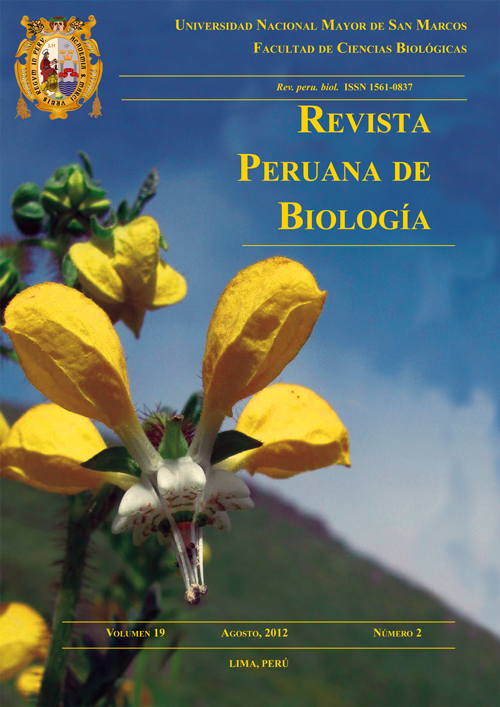Optimización de la biorremediación en relaves de cianuración adicionando nutrientes y microorganismos
DOI:
https://doi.org/10.15381/rpb.v19i2.839Palabras clave:
cianuro, relaves, BSR, sulfuros, biorremediación.Resumen
El objetivo del presente trabajo fue encontrar los parámetros óptimos para el desarrollo de los proceso de bioremediacion de relaves de cianuración, mediante experimentos factoriales a nivel de columnas con la adición de nutrientes y el empleo de bacterias sulfato reductoras (BSR) para estabilizar iones metálicos mediante la formación de sulfuros y bacterias capaces de biodegradar cianuro (BC). Se aislaron BSR de relave y se usó un inoculo previamente aislado de BC. Se realizó una prueba de adaptación a relave y una prueba en columnas para probar: (1) el efecto del empleo de 1 y 10 mM de lactato para incrementar la actividad de BSR; y (2) adición de 0,1 y 1 mM de acetato de sodio y ácido fosfórico para mejorar la actividad de BC. Con las mejores condiciones encontradas se realizó una prueba a nivel de columnas donde se adicionó un cultivo mixto (BSR-BC) y una mezcla de lactato y acetato en concentraciones de 1 mM y 10 mM. Se encontró que los nutrientes incrementaban la reducción de sulfatos un 48% en promedio y la adición de inoculo un 42%. La bioremediacion de cianuro se mantuvo en 12% sin efecto en la adición de nutrientes o inoculo. Se probó en dos relaves adicionales y la adición de lactato de sodio 1 mM permitió la inducción de BSR en 8 días en uno de ellos.Descargas
Descargas
Publicado
Número
Sección
Licencia
Derechos de autor 2012 Jasmin Hurtado, Arturo Berastain

Esta obra está bajo una licencia internacional Creative Commons Atribución-NoComercial-CompartirIgual 4.0.
LOS AUTORES RETIENEN SUS DERECHOS:
a. Los autores retienen sus derechos de marca y patente, y también sobre cualquier proceso o procedimiento descrito en el artículo.
b. Los autores retienen el derecho de compartir, copiar, distribuir, ejecutar y comunicar públicamente el artículo publicado en la Revista Peruana de Biología (por ejemplo, colocarlo en un repositorio institucional o publicarlo en un libro), con un reconocimiento de su publicación inicial en la Revista Peruana de Biología.
c. Los autores retienen el derecho a hacer una posterior publicación de su trabajo, de utilizar el artículo o cualquier parte de aquel (por ejemplo: una compilación de sus trabajos, notas para conferencias, tesis, o para un libro), siempre que indiquen su publicación inicial en la Revista Peruana de Biología (autores del trabajo, revista, volumen, número y fecha).






